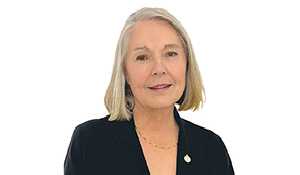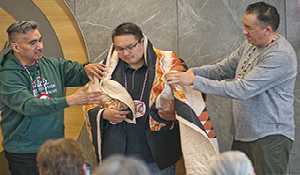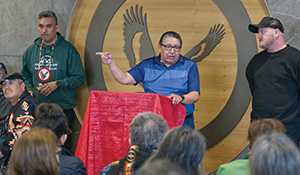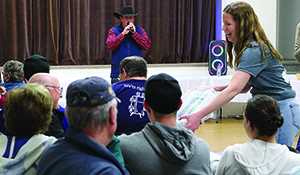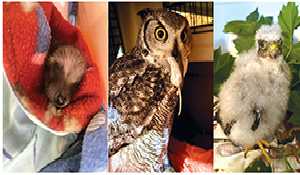Local projects help Canadian Foodgrains mission for ending world hunger
September 25, 2023, 4:05 pm
Sierra D'Souza Butts, Local Journalism Initiative Reporter


Growing projects in Saskatchewan play a major role in supporting the Canadian Foodgrains Bank mission of alleviating world hunger.
Rick Block, Regional Representative for Saskatchewan of Canadian Foodgrains Bank, said the province alone contributed $2.7 million last year to the non-profit organization.
“In terms of this past fiscal year, the Foodgrains Bank brought in a total of just over $21 million in donations,” said Block.
“That’s by individuals, that’s by businesses, and also numerous growing projects and community events in Canada.
“There would be approximately 200 growing projects and community events across Canada.
“In Saskatchewan we have more of the community events, as well, we have somewhere just over 40 of these growing projects.”
Funds raised from growing projects and community events are donated to the Canadian Foodgrains Bank. The organization then provides food assistance for people in need around the world.
The federal government matches donations to the Foodgrains Bank, allowing the help to go further.
“Of that $21 million of donations, Saskatchewan raised $2.7 million of that total, and of that $2.7 million, about $1.2 million came from growing projects and a few community events,” Block said.
“We’re definitely just about that 45 per cent mark, and we reflected that in Saskatchewan.
“It might go down to 40 per cent if you look nation wide, but really that is a significant bulk of our donation income that really comes from the concept of people working together saying, ‘hey, we’re better off working together to help alleviate hunger.’
“That’s really been a blueprint of the Foodgrains Bank since day one, you even see it in the structure throughout the organization, All of these organizations that say ‘if we work together, we’re able to accomplish a lot more than if we were each individual agency doing its own thing.’ That’s then reflected down to the community grassroots level. Harvest of Hope is a great example of that.”
Harvest of Hope, largest project in Sask.
One of the growing projects in the province that contribute to Canadians Foodgrains Bank locally, is Harvest of Hope in Moosomin.
Last year, Harvest of Hope brought in revenue of $130,000 and after input costs, an estimated $70,000 was donated to the Canadian Foodgrains Bank.
For this year, there are close to 35 growing projects in Saskatchewan.
“There’s 33 registered projects, two of them are in limbo, but one of the projects, which is called Grow Hope Saskatchewan has six locations,” said Block.
“It’s a bit of a network of farm families that offer acres. There are 37 field sites that are part of Foodgrains projects.
“Harvest of Hope in Moosomin really represents all the pieces of a traditional growing project.”
With Harvest of Hope being one of the largest growing projects in the province, Block was asked how it compares to other projects.
“It’s typical in the way it’s structured, in the way it’s organized,” he said.
“You see a great cross-section of people that are involved, businesses will step up. For example whenever we are going out there, the Credit Union will say let’s provide lunch, Borderland Co-op will provide fuel, companies are saying we’ll bring machines, along with individuals who are offering the use of their machines and their time.
“One of the things that’s very unique with Harvest of Hope is its size. It is the largest growing project in Saskatchewan.
“There are a few larger across Canada, but only a few, my guess is it would be in the top five. Harvest of Hope is at 288 acres, farming two quarter sections.
“We talked a little bit about the risk in farming, there’s even risk in starting up a fundraising project, Particularly in those one or two first years when land was not being donated, and this group had to raise funds in order to essentially pay the rent on that first year. Obviously with the hopes there would be enough income in that first year to be able to afford rent for next year, and any necessary inputs that maybe weren’t being covered.
“At 288 acres, that’s a lot of input. Often we see projects that are 80 acres or 100 acres, they can get a lot of their inputs often covered, but at 288 acres, that’s going to require a good amount of partnership building and also some financial management.
“I really credit the Moosomin Harvest of Hope for the way they’ve done that. They have done that very successfully.”
Block said growing projects in Saskatchewan are all spread out across the province.
“If I did a formal count, perhaps we would see a little bit of a concentration in the southwest, maybe an hour or so centred around Swift Current,” he said.
“Alongside growing projects, there are individual farms and farmers that continue on an annual basis, it might not officially be registered as a growing project, but they’re providing grain donations on an annual basis, it almost acts like a growing project.
“There is a real concentration of growing projects around Yorkton, but there is also quite a few individuals who are an hour radius around Yorkton where there’s lots of folks who support the Foodgrains Bank.
“The third area I would point out is north of Saskatoon, through the traditional Mennonites towns there is one large project that isn’t a growing project, but it’s a community event. There’s lots of individuals who contribute as well to the Foodgrains Bank, but there’s foodgrains supporters all over the province.
“We’re in our 40th anniversary year, and there’s always new people coming to the table to support our work, and there’s people who have been doing it for 40 years.”
Local projects help alleviate world hunger
With each initiative helping to contribute to Foodgrains Bank goal for alleviating world hunger, Block explained how many people the foundation has helped world-wide.
“The total grant money that came from Global Affairs (the Government of Canada) was approximately $43 million,” he said.
“They have a number of grants that match what donations are doing. When you combine the donations of Canadians, government grants, and there’s even additional grants that are brought in, it means that on an annual basis last year we programmed about $82 million of emergency food assistance and long term food security work internationally.
“That $82 million reached just over a million of people in total this past year.”
Block spoke about what he thinks motivates farmers across Canada to volunteer for projects like these.
“This is now my eighth harvest with the Foodgrains Bank. I’ve gone through a decent number of years and talked with lots of farmers,” he said.
“Obviously my sample would be Saskatchewan, but I think it’s representative of farmers across the country.
“There’s a number of different motivations, some farmers are definitely responding because they see what some of their neighbors and friends are leading in their community. They understand the real importance of getting together and helping those that are less fortunate.
“That would be the motivation of some of the farmers. As it gets closer into the central mission of the Foodgrains Bank, there are many farmers who understand the risks of growing food, they understand the risks of their livelihood being tied to a larger market, so many forces beyond their control, let alone the weather.
“Intuitively, and in their own experience, they get the sense of what happens when these things don’t co-operate and the possibilities of not being able to provide for your family.
“In Canada we have lots of risk mitigation tools, like crop insurance and whatnot, usually most farmers say at the end of the day, even if the whole year’s a bust we’re going to make it, and we’ll get through until the next year, but they identify that’s not the case for many small holder farmers around the world.
“Obviously, that pulls a lot of heartstrings and people want to be involved in that.”
“A little bit closer and more into the heart of the Foodgrains Bank identify and mission is that we’re known as a Christian response to hunger. There is a faith motivation for a large cross-section of farmers as well.
“At its core, part of the Christian faith framework is that everyone’s created in God’s image and that everyone has the dignity of receiving food for today, a sense of food security for the coming days, and so part of it is a desire to be able to respond both compassionately and generously, when and where, as possible to help those who don’t have enough.
“I think connected to that, farmers and people in communities really enjoy that the Canadian Foodgrains Bank is a Christian organization and I think people at the community level enjoy being able to say we’re doing this.
“People from a variety of churches and people who are part of any church are simply working together under this mission to help the Foodgrains Bank do its work internationally. There’s some motivation in that as well.”






